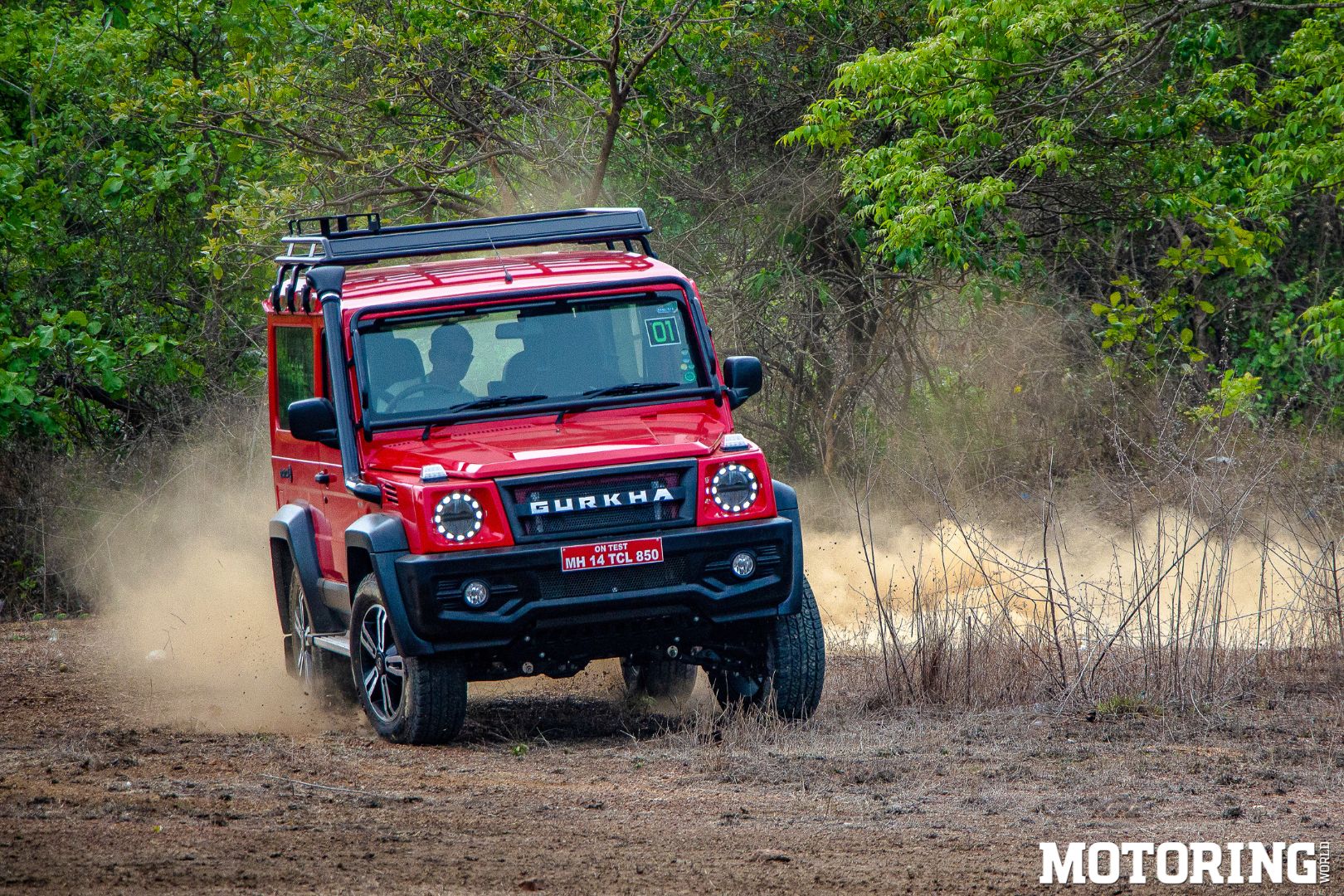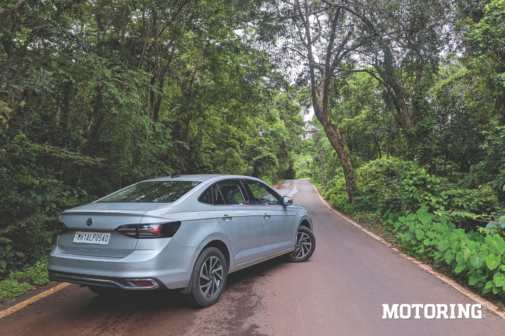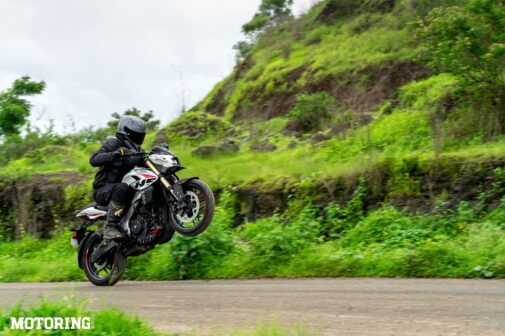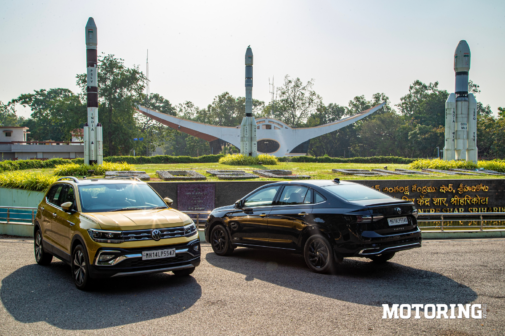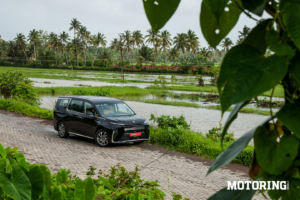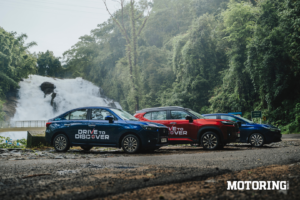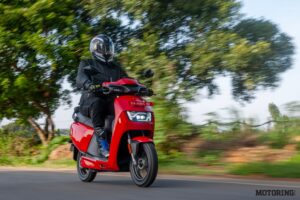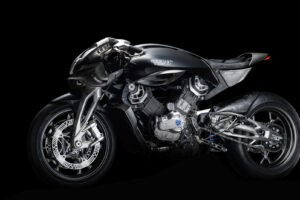Let me begin this story with a word of appreciation for the corporate communications team at Force Motors. While perusing the updated Gurkha’s brochure, I found that on its last page, there were only four colours listed – and they were Green, Red, White and Black. None of that Gangrenous Green, Revolting Red, Wondrous White and Bewitching Black stuff so beloved of the automotive industry – just four colours (easy to pick from) with the correct colour names.
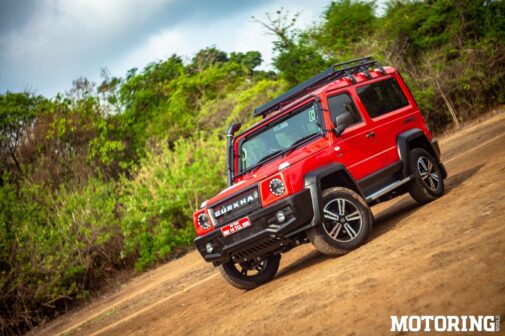
Elsewhere, in a separate press note, Force Motors makes no bones about the fact that the Gurkha’s design is derivative of the G-Wagen. ‘The Force Gurkha retains the iconic Mercedes Gelandewagen-inspired design synonymous with its rugged character and extreme potential’ it says, and I say well done – if you’re copying something, own the hell out of it. This fairly blunt approach goes well with the Gurkha, which is a blunt weapon, no matter how refined it’s become over the years.
The Mahindra Thar has been the flavour of the off-roading season for a long time, but it’s worth noting that the Gurkha pre-dated it by 13 years. In 1997, the ‘Trax Gurkha’ was first revealed in military colours, as a vehicle built for the toughest conditions. The Indian Army uses it as a LSA (light strike vehicle), in which form it has no doors, windows or roof. To make up, it has things that would not normally be found on an options list – a rocket launcher and machine guns – plus things like run-flat tyres, a folding windshield and a design that’s ideal for being parachuted off military transport planes. Militaries in Africa are very fond of the Gurkha as well, and it sees extensive use in countries like Angola. Clearly, it was designed as a hardcore, tough-as-nails vehicle, and when the first civilian version arrived about a decade ago, it still fit that description.
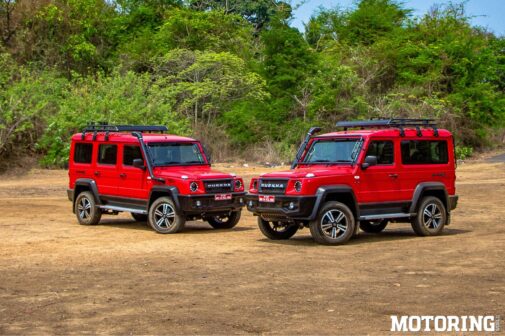
Cut to the present day, and Force Motors has pulled a sly one on Mahindra by revealing a 5-door/7-seater Gurkha, mere months before the 5-door Thar is due to break cover. That’s the really big news as far as the Pune-based company is concerned; its existing 3-door Gurkha has received a host of updates, sure, but a new passenger model is something to go to town about for a firm that primarily makes commercial vehicles, so I’ll deal with the 5-door first.
To begin with, it’s absolutely enormous; at the launch event in Goa, it looked like a small house had been covered by a tarpaulin, just before it was revealed to us. Up close, it’s an undeniably impressive-looking vehicle, over two metres in height with a roof carrier fitted, 4390mm long and 1865mm wide – a shrinking violet it most certainly isn’t. Everything about its box-like design is brutishly simple, but this is not to say it’s simplistic; the indigenous G-Wagen has some standout flourishes, like the prominent Gurkha badging on the grille, the bonnet-mounted front indicators, the robust 18-inch alloy wheels, the flared wheel arches, the circular LED headlamps, the running boards, the windshield guard, roof-mounted carrier and that iconic snorkel.
Force Motors has gone with ‘ain’t broken, don’t fix’ reasoning in the design department, and this is a good thing; the car also looks smashing with the bright red paint scheme. Both models look best from the front three-quarters, and the 3-door is visually identical to the 5-door, save for two things – its shorter length/wheelbase and its huge rear window (which can’t be opened, a la the OG Tata Sierra). Between the two cars, the 3-door narrowly wins the modelling contract, and I suspect it’ll continue to be the choice of seasoned off-road enthusiasts.

The two cars share (almost) the same interiors, too. The 5-door is a 7-seater, with a bench in the 2nd row and two captain seats in the 3rd. This should have straight away made it the more practical model, but unfortunately this isn’t the case. The bench is very cramped, and if the front two seats are pushed back a reasonable distance, those in the 2nd row will have their knees jammed into the front seats, with no room to move when they want to get out of the car. Ironically, it’s the 3rd row that is more comfortable and spacious, even though you have to access it through the 5th door; the 2nd-row bench doesn’t fold down.
Things are far better in the 3-door, with plenty of legroom for the two people in the 2nd row captain seats; the downside is that again, access to them is via the 3rd door, and headroom isn’t great – if you hit a pothole at speed, it’s quite likely that those at the rear will bump their heads on the roof. In terms of actual practicality, the 3-door surprisingly wins – there’s 500 litres of boot space in it, with close to nothing in the 5-door if seven people are sitting in it. On the plus side, the 5-door gets A/C vents for the 2nd row, whereas the 3-door has to make do with the vents in front – and a rear glass area that can’t be opened. That said, the A/C is very powerful in both cars (if a little noisy) and cools the cabin quickly.
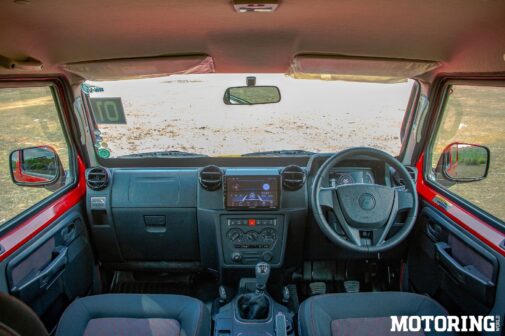
If you’re looking for a deluxe cabin experience (or even a Thar cabin experience) in terms of fit, finish and features, look elsewhere. The Gurkha has progressed in leaps and bounds in terms of its interior, but it’s still a bit rough-and-ready. The plastic bits look and feel sub-par, and the A/C vents have sharp points on them, exactly where your thumb and finger would grip them to move them around. There are some slightly uneven panel gaps here and there, and I could also hear a few things rattling around while I drove, although I couldn’t pinpoint what they were. The seat fabric quality is acceptable, and the seats themselves felt like they’d be comfortable over a long drive.
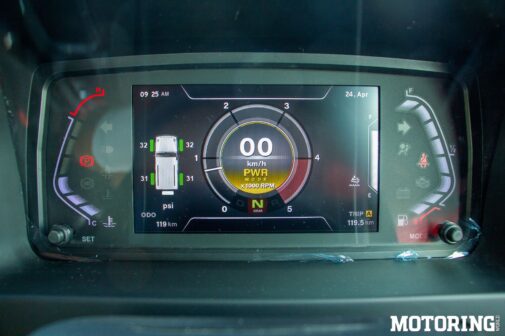
It’s not as if the Gurkha doesn’t have most of the mod-cons you’d expect in a car these days. There’s a hi-res, legible digital instrument panel, a 9-inch touchscreen infotainment system, TPMS, dual airbags, ABS/EBD, tilt/telescope adjustable steering wheel, start/stop, cornering lights and sundry others. There’s no ventilated seats, cooled glovebox, connected car tech and so on, but these are not things that a Gurkha buyer is going to prioritise; there’s just enough here to keep everyone happy.
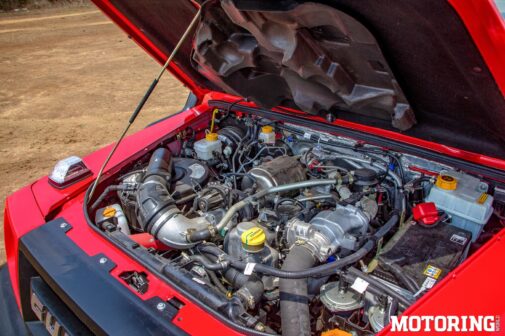
Force Motors officials said at the launch that they’ve been receiving two major points of feedback from existing Gurkha buyers. The most important one is that the previous car’s power output – only around 90 bhp – was just too anaemic for real-world driving; the other is that the car’s on-road manners were a bit all over the place. Having driven the older car, I can confirm that both are true, so I was keen to see how different the updated models are, since both areas of concern have been addressed. The good old Merc-derived, 2.6-litre, 4-pot turbodiesel now makes a much more healthy 138 bhp, alongside 32 kgm of torque; there’s also a new independent front suspension that’s been massaged to make it more planted-SUV and less rodeo horse. At startup, a rather cool Gurkha animation appears on the instrumentation, and then the engine settles into a reasonably refined idle; you can definitely hear it, but it’s not an annoying drone.
The clutch and gear action are both pretty hefty, and it takes a bit of effort to row through the gears (especially to engage reverse); additionally, the clutch pedal is snappy, so you’re likely to jackrabbit off the line until you get used to it. Once you get around the theatrics, the Gurkha rolls down the road in a reassuringly solid manner, and the view from the driver’s seat is outstanding – I imagine it’s what it would be like to ride a giraffe. In keeping with its rugged image, it’s a physical experience to drive – a bit of wrestling is required with the steering wheel, gear lever and pedals, but it’s all quite enjoyable and unpretentious.
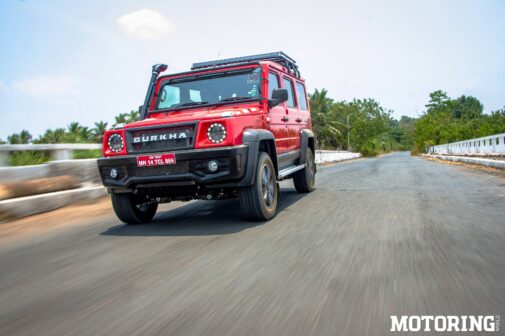
The bump in the power figure is immediately apparent, and it’s almost as if a new engine has been shoehorned into the bonnet. It’s far more tractable than before, with peak torque appearing between 1400 and 2600 rpm, and it’s quite easy to potter around at low speeds without having to constantly change gears; this alone makes it a much easier car to drive in traffic. The significant power bump has led to a Gurkha that’s now a far better highway cruiser as well, with enough grunt finally at hand to carry out overtaking manoeuvres without having to give advance notice. Refinement and NVH levels are quite acceptable, but you’re certainly not hermetically sealed off from everything that’s happening around you, which is probably a good thing. I’m not sure what the car’s actual top speed is, since I didn’t have enough road available to find out, but cruising at a steady 120 kph was not a bother; honestly, you don’t need more in a vehicle of this nature.
In terms of ride and handling, it’s the 3-door that exhibits the results of the suspension-tweaking most prominently. On the move, it feels solidly planted in a straight line, showing much less of a tendency to pogo around than before; hard cornering can also be pulled off without breaking into too much of a sweat, with body roll at a far more acceptable level. Bumps, potholes and other annoyances are all soaked up effortlessly, and it’s only when you go through large ones at some speed that you’ll get chucked around in your seat a bit.
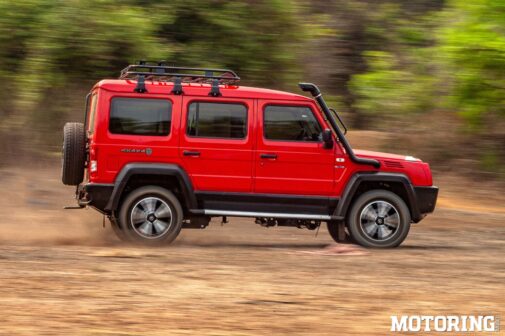
The 5-door, on the other hand, still feels very much like an old-school, ladder frame, coil spring number. Its greater length makes it pitch and yaw, and even though it has the same level of pothole-absorbence as the 3-door, it’s not going to be that comfortable a car to drive – and be driven around in – over long distances. It’s also a massive 325 kg heavier than the 3-door, so it’s more of a ponderous, lumbering beast to drive. Both cars have front disc brakes only, with heavy brake pedals, so braking performance is on the correct side of acceptable.
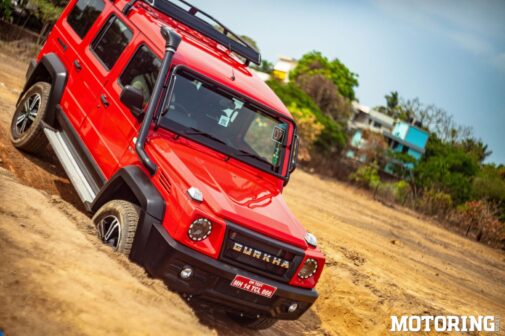
Show both versions an extreme off-road course, however, and they’re instantly in their natural environment. With shift-on-the-fly 4WD with 4-low, and front/rear lockable differentials, both Gurkhas will laugh in the face of the toughest terrain you can throw at them. Everything about them has been tuned for beating the rough stuff into submission – 700mm of water wading depth, a snorkel, short front and rear overhangs, 233mm of ground clearance, 35-degree gradeability, 39mm approach angle, 37mm departure angle and 28mm ramp over angle. It really is as simple as shifting to 4L, sticking it in first gear and crawling confidently through pretty much anything you choose to aim it at; you won’t even need the lockable diffs, 90 per cent of the time. The 3-door still feels the most natural car to do all of this in, although the 5-door will easily do so if you want to scare the daylights out of your family and pets. Put simply, this is the most hardcore off-roader you can buy in its price range, in either guise.

Now to the big question – is the updated Gurkha a car you can now live with every day? With a few caveats, it is. The engine and suspension updates have genuinely made it more user-friendly, without losing any of its off-roading prowess, and the cabin – although still on the basic side – is a more pleasant space. At an expected price of Rs 15 lakh onwards, ex-showroom, the Gurkha will come at a significant premium over the Thar’s starting price, but it will offer the kind of off-road ability as standard that you’ll have to pay more for with the Mahindra, which should appeal to its core audience. I would be happy to drive one around every day, which is not something I would have said about the earlier version. In fact, excuse me while I make a call to the good folks at Force Motors…
AUTODATA
2024 Force Gurkha 4×4
POWERTRAIN
Displacement: 2596cc, I4, turbo-diesel
Max power: 138 bhp@3200 rpm
Max torque: 32.63 kgm@1400-2400 rpm
Transmission: 5-speed, MT
TYRES
F/R: 255/765 R18
DIMENSIONS
L/W/H (mm): 3965/1865/2080 (3-door), 4390/1865/2095 (5-door)
Wheelbase: 2400 mm / 2825 mm
Ground clearance: 233 mm
Kerb weight: NA
Fuel capacity: 63.5 litres
PRICE: Rs 16.75 lakh to Rs 18.00 lakh





